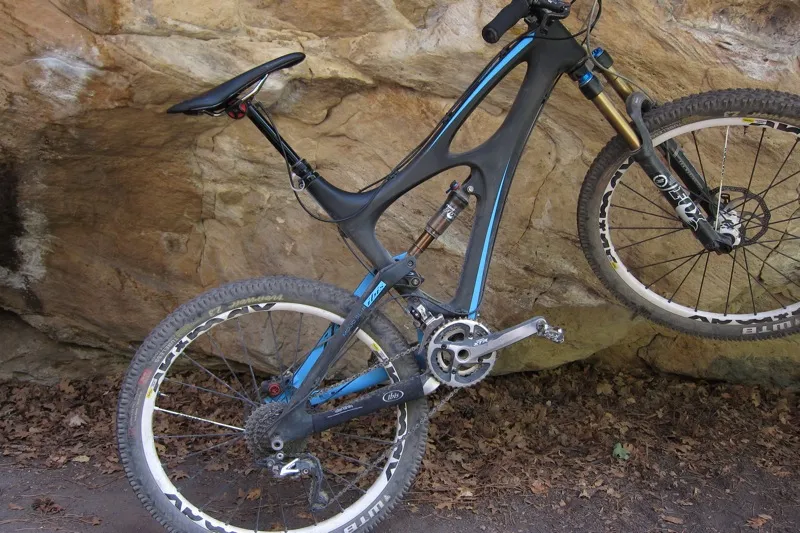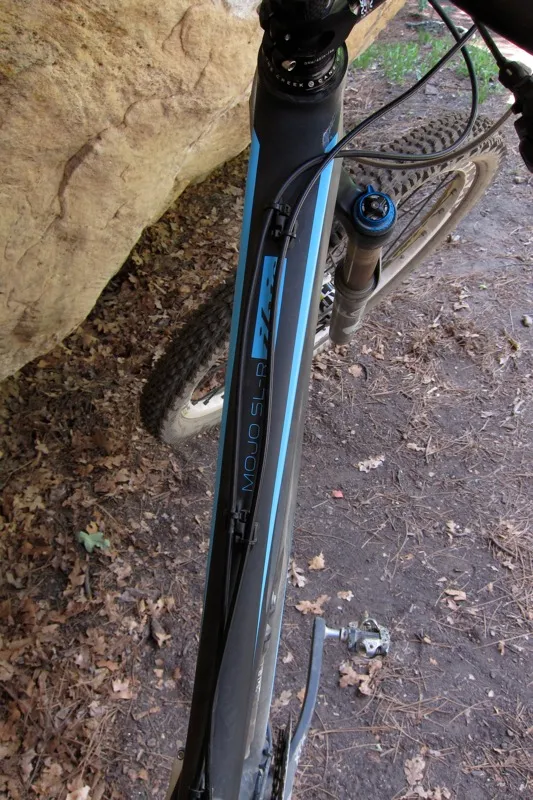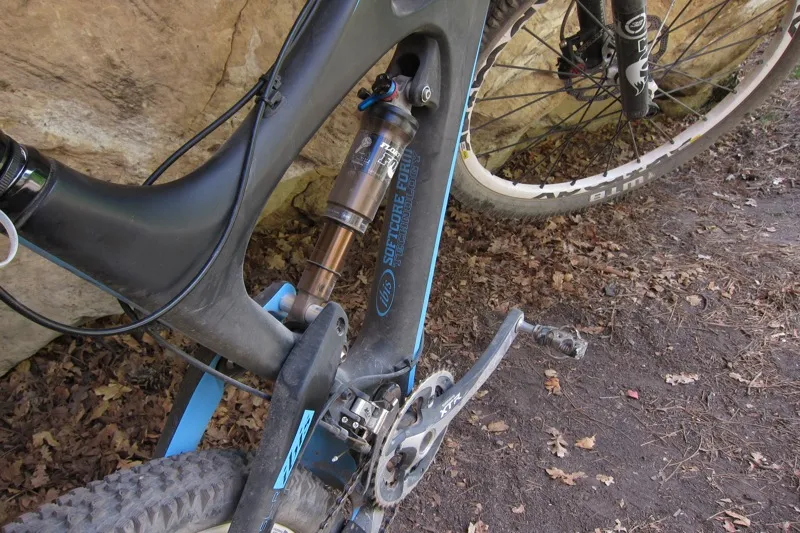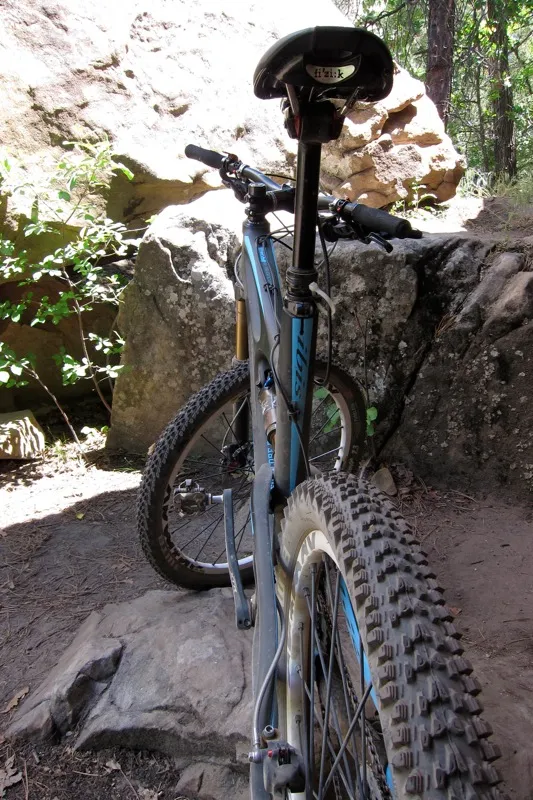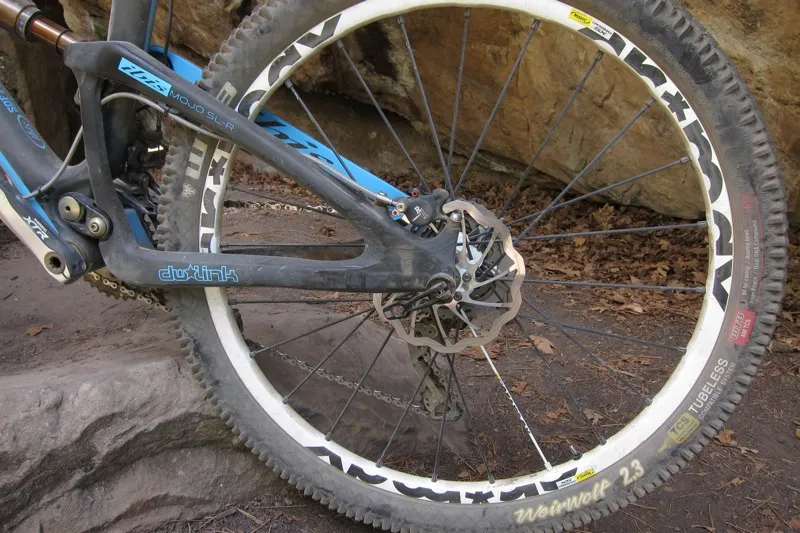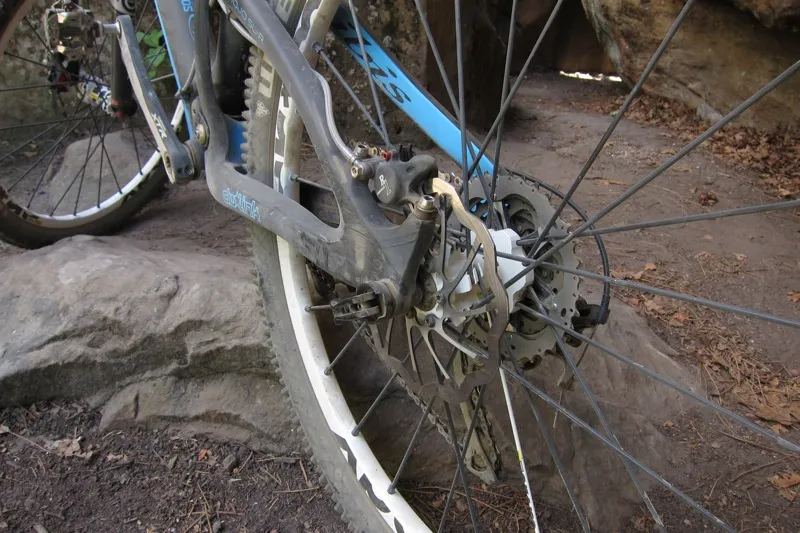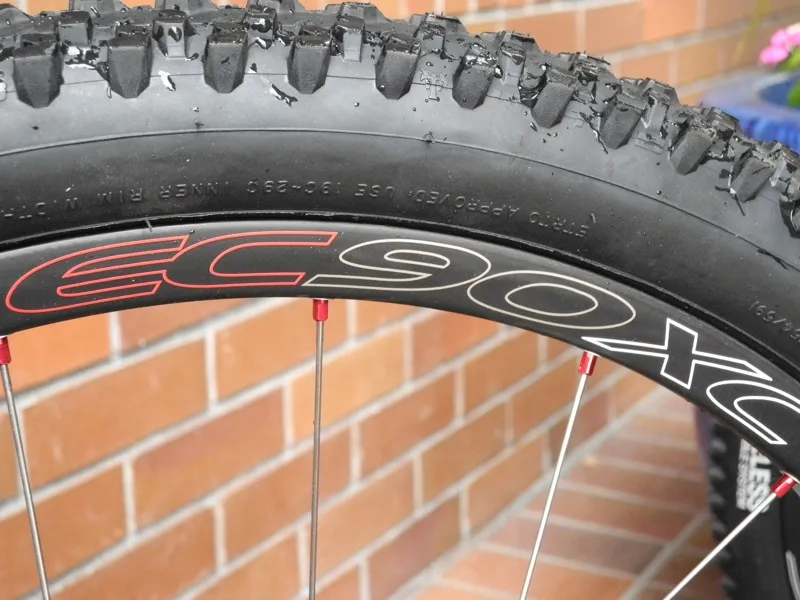The new Mojo SL-R is an impressive bike, but Ibis co-owner Scot Nicol’s claim that “we hit the reset button" is slightly overstated. The SL-R takes all that’s been learned since the original was launched in 2004, in terms of carbon construction and design features. But it incorporates these changes into a carbon copy of the Mojo SL's suspension design and frame geometry — nothing in those two key areas has changed.
This makes for an upgraded bike, and a great bike at that — especially if you liked the previous model. However, if you're looking for more progressive geometry — ie. a slacker head tube — you’ll need to look elsewhere or buy Cane Creek’s new tapered steerer compatible AngleSet.
As a package, the Mojo SL-R will appeal to reformed cross-country riders and racers looking for more travel without any sort of weight penalty. But those coming from the other side of the spectrum — say, gravity racers looking for a ‘cross-country bike’ — might be put off by the steep head angle and the feeling of a high ride from the DW-Link suspension system; they'll be much happier with Ibis’s Mojo HD.
Ride & handling: Super-light bike that's a little out of its depth on more technical trails
Our test bike weighs 22.92lb (10.4kg) with Ibis’s WTF XTR build kit and upgraded Easton EC90XC carbon wheels. That’s impressively light for a 140mm-travel bike, especially considering you could shave even more weight by opting for SRAM's XX groupset. The 1,280g wheelset does push the price up to US$8,321, though — $1,722 north of the standard WTF XTR package, which comes with Stan’s ZTR Crest wheels (which are still quite light).
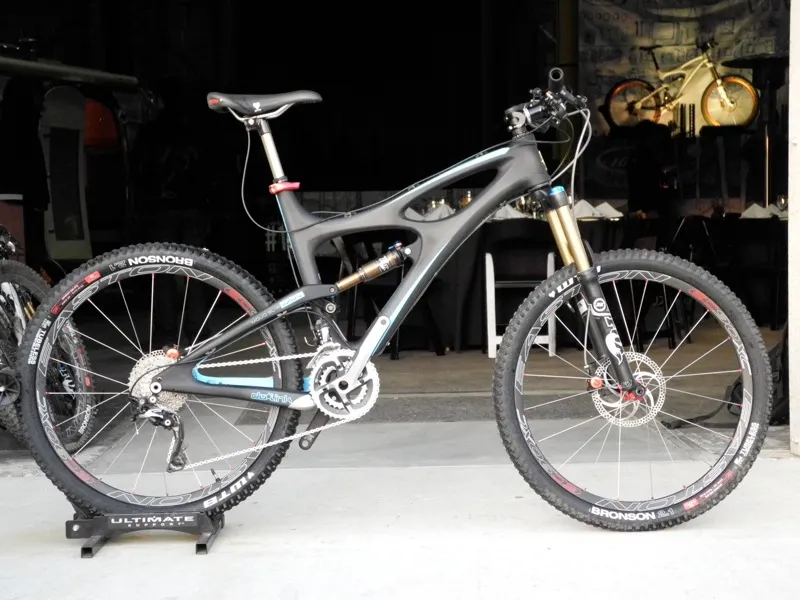
22.92lb (without the dropper post). Need we say more?
The weight undoubtedly aids the Mojo SL-R’s climbing prowess, which is good save for one key area where we experienced problems — ultra steep, rocky climbs. Here, the slight stiffening of the DW-Link suspension under power, the high-feeling bottom bracket [it isn’t that high, rather the suspension design makes it feel higher than it is] and steep head angle conspired to tip us off line. After multiple tries on one climb on a regular test route, we ended up walking it, despite having made it up on other bikes with similar amounts of travel.
The new Fox RP23 Adaptive Logic Kashima-coated rear shock has two effects on the ride of the Mojo SL-R: it gives the DW-Link design noticeably better small bump sensitivity, but it also adds to the amount of shock movement caused by slight weight shifts and pedaling irregularities. This was inconsequential to some testers, but bothered one to the point that he ended up switching the ProPedal platform damping from the 'full open' position to ‘Level 1’ to achieve a quieter ride. That aside, the suspension design works well enough off road that the shock can be left in the open position at all times, with ‘Level 3’ Pro Pedal best reserved for riding roads to the trailhead.

Fox's RP23 Kashima rear shock offers a very supple feel to the suspension
Point the Mojo SL-R downhill and again you'll notice that the Kashima-coated shock adds to the sensitivity of the ride, addressing a criticism of the Mojo SL. The DW-Link design still offers a firm ride, but it’s one akin to a performance sports car or motorcycle, absorbing bumps, but with the purpose of traction rather than comfort and always at the ready to transmit your power to the ground when you ask it. The suspension performs well under braking and we didn't experience any harsh bottom-outs. Once gravity takes hold, the suspension takes over and you never need to think about it.
What some riders will need to think about — especially when the trail really pitches down — is the 69˚ head tube angle found on the SL-R, which is in line with what many hardtails and progressive short-travel suspension bikes employ these days. At least one of our test riders said he wouldn’t want to own the bike without an AngleSet installed. This would change the head angle to 67.5˚, making the bike more stable at speed.
Ibis claim the SL-R is 100 percent stiffer torsionally than the original Mojo SL and comes within 10 percent of the Mojo HD’s numbers. While we didn’t have any performance issues — steering or otherwise — we were expecting the increase in stiffness to be more tangible. Santa Cruz’s TRc, Cannondale’s alloy Jekyll and Yeti’s new SB-66 alloy bike all feel stiffer than the SL-R.

Burlier wheels and tires bump the weight up 3lb, but make for a better all-round package
After spending some time on the original setup, we also rode the SL-R with Mavic’s new Crossmax SX enduro wheelset and reinforced WTB WeirWolf FR tires. This bumps overall weight up to 26.21lb but adds considerable stiffness and stability; we actually preferred the heavier bike for all-round riding. If you’re going to go all-out on carbon wheels for your SL-R, we'd recommend going with the burlier Easton Havens rather than the ultra light EC90XCs. You’ll end up with a much more capable package that’s only about a ½lb heavier, depending on tires.
Frame: Cutting-edge construction combined but slightly old-school angles
While the geometry may be unchanged from the original SL, the SL-R's construction process is cutting-edge. The bike is molded on a sacrificial ‘softcore’ mandrel, which allows for extremely precise material placement and hollow molding in areas where it hadn’t been possible previously — namely the shock mount on the main frame.
This technique allows Ibis to bring the weight of the SL-R frame down to just over 5lb; our large sized sample weighed 2,320g/5.11lb. Along with the low weight, the frame is packed with features, including a tapered head tube (1-1/8 to 1-1/2in), BB92 press-fit bottom bracket, high-direct mount front derailleur, cable routing for a dropper post and 12x142mm rear Maxle-Lite through axle.
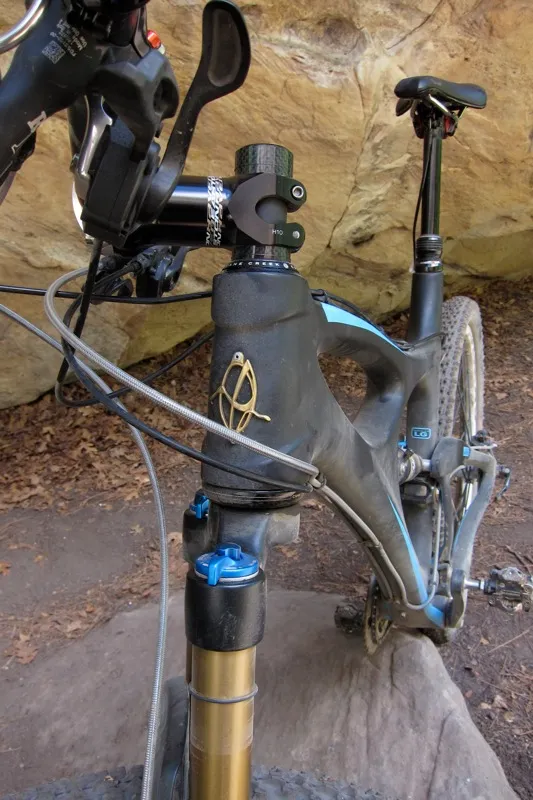
The tapered head tube will fit Cane Creek's new tapered compatible AngleSet for those looking for something slacker
We were disappointed not to see any option to mount a chain guide, since the bike is a prime candidate for 1x10 gearing. MRP do make a 1x guide that utilizes the high-direct derailleur mount, but they don’t recommend it for bikes with over 140mm of travel due to the fact it only captures the chain at the top of the ring. The 1x top guide paired with Shimano’s new Shadow Plus rear derailleur is likely the best solution.
Equipment: Wishlist spec, but we'd opt for a bigger bar, wheels and tyres
Our test bike came with an upgraded version of Ibis’s WTF package, which is the ultimate, crème de la crème of components: Shimano M980 XTR drivetrain; Formula R1 brakes; Easton EC90SL carbon seatpost and handlebar, Haven stem and EC90XC wheelset; a carbon railed WTB Valcon saddle; and 2.1in WTB Bronson tires.
As built, one could easily cross-country race this 140mm bike on a short course, and it would be an absolute weapon at a 100-miler or 24-hour event. For daily trail riding, Super-D or enduro racing, we'd prefer a heavier, wider wheelset and bigger tires. While you notice the extra weight – in our case, more than 3lb – when climbing, the bike is still supremely pedal-able and you’ll definitely have more fun on the flipside.
Our biggest equipment gripes are the narrow 635mm bar, too-light-for-trail-riding wheels and skinny cross-country tires. While everything is top notch quality, the bike simply outruns the cross-country components too quickly. The Ibis foam lock-on grips with a bulbous center section didn’t fit our hands very well, either.

We appreciated the stout Easton Haven stem, but could have used a wider bar
While the Formula R1s are plenty powerful and provided us with adequate modulation, we were stuck with the levers adjusted too far from the bars for our fingers, despite bottoming out the adjuster. Formula say this is something that will be remedied for 2012. The XTR drivetrain and Fox TALAS 32 150mm/130mm Kashima fork performed well, although the latter's RLC damper didn't allow us to run the lockout platform as light as we'd have liked. Its ‘open’ performance was spot on, however.



